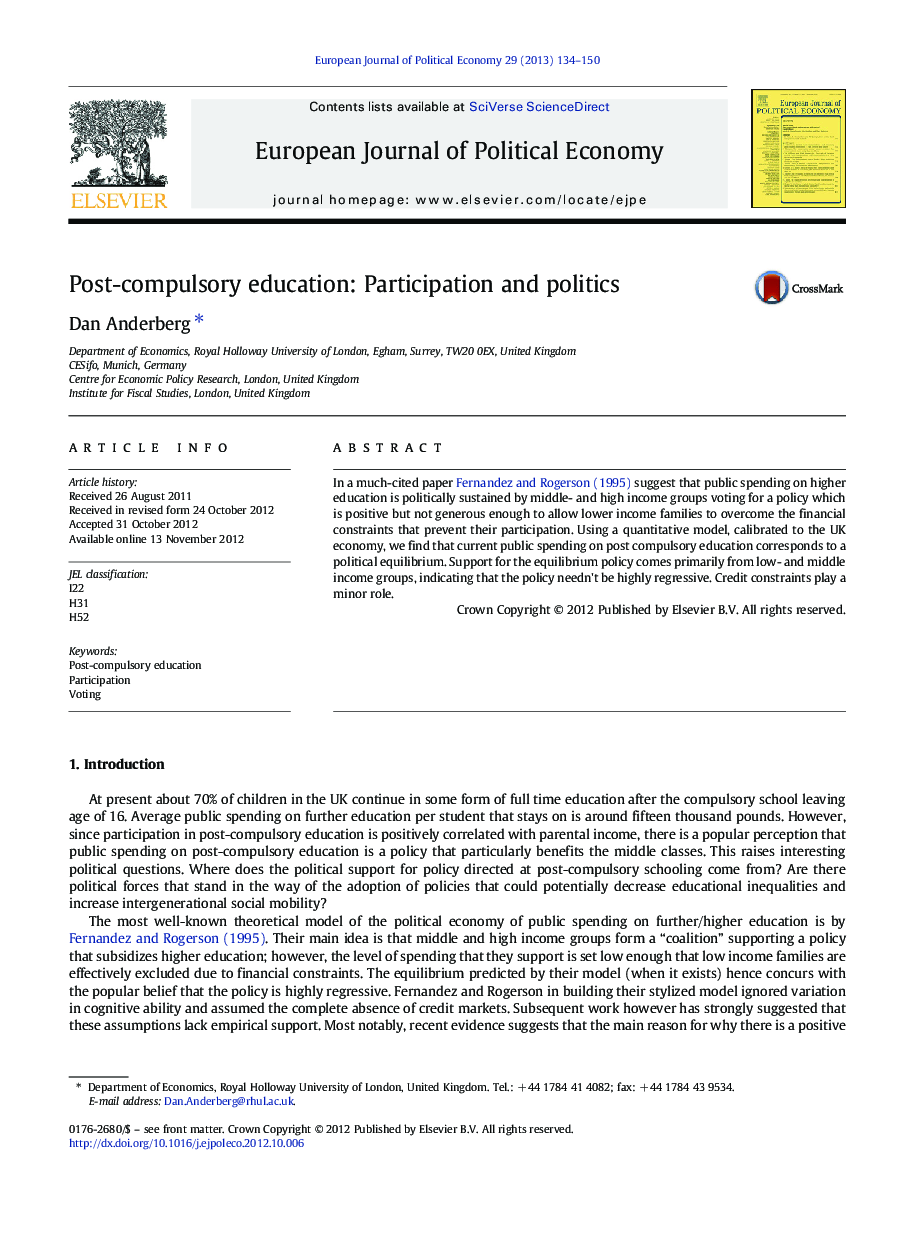| Article ID | Journal | Published Year | Pages | File Type |
|---|---|---|---|---|
| 5068198 | European Journal of Political Economy | 2013 | 17 Pages |
Abstract
In a much-cited paper Fernandez and Rogerson (1995) suggest that public spending on higher education is politically sustained by middle- and high income groups voting for a policy which is positive but not generous enough to allow lower income families to overcome the financial constraints that prevent their participation. Using a quantitative model, calibrated to the UK economy, we find that current public spending on post compulsory education corresponds to a political equilibrium. Support for the equilibrium policy comes primarily from low- and middle income groups, indicating that the policy needn't be highly regressive. Credit constraints play a minor role.
Keywords
Related Topics
Social Sciences and Humanities
Economics, Econometrics and Finance
Economics and Econometrics
Authors
Dan Anderberg,
